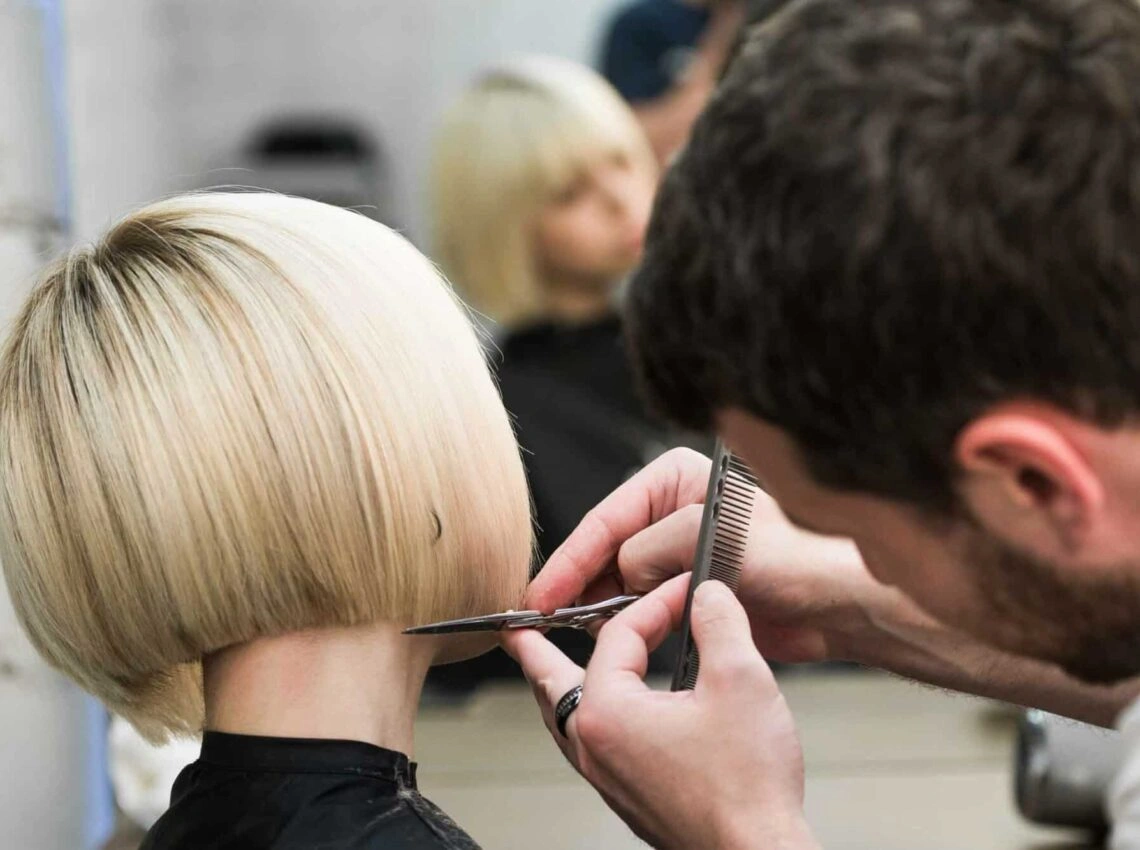Do You Need a Degree to Be a Hair Stylist? Here’s What It Really Takes
If you’ve ever considered becoming a professional hairstylist, you’ve probably asked yourself, “What degree do you need to be a hair stylist?” The truth is, you don’t need a traditional college or university degree to pursue a career in hairstyling. Instead, you need a state-approved cosmetology education, hands-on training, and a passion for making others feel confident and beautiful.
But don’t mistake the lack of a college degree for an easy road—this industry requires dedication, creativity, and the ability to master a variety of skills. From learning precision cuts and hair coloring to understanding sanitation protocols and building client relationships, hairstyling is both an art and a science.
One salon that’s helping future hairstylists thrive is Silvie Hair Studio, a trusted name in professional hair education. Their Hair Extension Classes are a perfect opportunity for new and seasoned stylists to gain hands-on experience in one of the most in-demand beauty services. These classes offer personalized instruction, access to high-quality tools and materials, and insight from industry experts who know what it takes to succeed. If you’re ready to stand out in a competitive market and take your skills to the next level, this is your chance. Silvie Hair Studio’s small class sizes, expert-led demos, and supportive learning environment ensure you leave confident and client-ready. Don’t wait—enroll today and turn your passion into a polished, professional future.

Understanding Hair Stylist School
Hair stylist school—more formally called a cosmetology program—is where aspiring beauty professionals go to build their foundational knowledge and practical skills. These programs are offered through specialized beauty schools, vocational training centers, and sometimes even community colleges.
In cosmetology school, you’ll learn a wide range of skills, including:
- Hair cutting, coloring, and styling techniques
- Shampooing and conditioning
- Scalp and hair analysis
- Hair chemistry and product formulation
- Sanitation and hygiene protocols
- Client communication and salon etiquette
- Business and salon management fundamentals
The goal is to provide a comprehensive education that prepares you for the realities of working in a professional salon or launching your own business. Many schools even include mock salon environments so students can gain real-world experience before they graduate.
Enrollment Requirements
Enrollment requirements for cosmetology school are generally straightforward but can vary by province or state. Most commonly, you’ll need:
- To be at least 16 or 18 years old (depending on location)
- A high school diploma or GED
- A valid government-issued ID
- A completed application form
- Occasionally, a background check or proof of residency
Some programs may also require an admissions interview or basic aptitude test, especially if you’re applying for a competitive program with limited spots. Thankfully, many schools offer flexible start dates and even rolling admissions, so you can start when you’re ready.
Duration of Hair Stylist Training Programs
The time it takes to complete your training depends on the program type and your personal schedule. Most full-time cosmetology programs last 9 to 12 months, while part-time programs can take up to 2 years.
Key timeframes include:
- Full-Time: Typically 30–40 hours/week for 9–12 months
- Part-Time: Evenings or weekends over 18–24 months
- Accelerated Programs: Intensive training that condenses the curriculum into a shorter time frame
Each state or province also requires a certain number of training hours, so make sure the school you choose meets or exceeds those standards.
Coursework and Hands-on Training
Hair styling isn’t something you can learn from a textbook alone. Cosmetology schools combine classroom theory with hands-on training to help students build both knowledge and confidence. Coursework typically includes:
- Anatomy of the scalp and hair
- Hair cutting and layering techniques
- Coloring theory and chemical processing
- Braiding, weaving, and extensions
- Salon health and safety standards
- Client consultations and professional ethics
Hands-on training often begins with mannequins and transitions to real clients in a school-run salon or clinic. This is where you’ll refine your skills and learn how to work efficiently, creatively, and safely.

Apprenticeships and Training Hours
To become licensed, most jurisdictions require that you complete a minimum number of training hours, usually between 1,500 and 2,000 hours. These hours can be fulfilled in a traditional cosmetology school or through a registered apprenticeship program.
For example:
- In California, the apprenticeship route requires 3,200 hours of supervised work and 220 hours of classroom instruction.
- In Ontario, Canada, hairstyling is a Red Seal trade, requiring 3,020 hours total—2,220 hours of on-the-job training and 480 hours in school.
Apprenticeships are a great way to learn on the job while getting paid. You work under a licensed stylist, gaining real-world experience, while still attending theory classes as needed.
The State Licensing Exam Process
Once your education and training hours are complete, you must pass a state or provincial licensing exam. This exam typically consists of two parts:
- Written Test – Covers theory, safety, sanitation, and laws/regulations.
- Practical Test – Requires you to demonstrate your skills in haircutting, coloring, styling, and sanitation on a mannequin or live model.
Some states also include an oral component or additional specialized exams if you’re pursuing an advanced license.
Passing the exam earns you a license to practice, which must be renewed periodically and sometimes maintained through continuing education.
Financial Considerations
While not as costly as a university degree, cosmetology school is still an investment. Typical costs range between $10,000 and $20,000, depending on:
- Location
- Program length
- School reputation
- Supplies and kits included
Financial aid options may include:
- Federal or provincial student loans
- Grants (like the U.S. Pell Grant)
- Scholarships offered by beauty schools or organizations
- Payment plans with low or no interest
- Paid apprenticeships that let you earn while you learn
Be sure to ask the school’s admissions office about funding opportunities before you enroll.
Career Opportunities Post-Licensure
With your license in hand, a world of possibilities opens up. Licensed hair stylists can work in:
- Hair salons and barber shops
- Spas and wellness centers
- Hotels, resorts, and cruise ships
- Film, fashion, and entertainment industries
- Freelance or mobile hair services
Some stylists even go on to become salon owners, brand ambassadors, educators, or product developers. With a strong work ethic, great customer service skills, and continuing education, you can build a thriving and rewarding career.
Continued Education and Professional Growth
Graduation isn’t the end—it’s just the beginning. The best stylists stay sharp by:
- Taking advanced courses in techniques like balayage, keratin treatments, or extensions
- Attending industry trade shows and beauty expos
- Following trend forecasts and social media influencers
- Participating in brand training for product lines
Many regions require continuing education for license renewal, but even where it’s not mandatory, it’s a smart way to stay competitive and grow your income.
What Degree Do You Need to Be a Hair Stylist?
You do not need a college or university degree to become a hair stylist. What you do need is:
- A high school diploma or GED
- Completion of a state-approved cosmetology program
- A passing score on your licensing exam
In essence, you’re earning a professional certification, not a degree. It’s this hands-on, specialized training that prepares you for the real work—and pays off much faster than a traditional four-year degree.
Which Course Is Best for a Hair Stylist?
The best course depends on your goals. Look for a comprehensive cosmetology program that includes:
- Haircutting, coloring, and chemical treatments
- Business and client management
- Safety, sanitation, and state law compliance
- Real-world practice with clients
- Preparation for your state licensing exam
If you’re looking to specialize, like in hair extensions, Silvie Hair Studio’s Hair Extension Classes are an ideal next step. These focused classes teach high-demand techniques that boost your income potential and expand your service offerings.
Final Thoughts
Becoming a licensed hair stylist is more accessible than many people think, but it still takes commitment, training, and continuous learning. You don’t need a degree, but you do need to invest in the right kind of education. From understanding the basics of hair structure to mastering trendy styles and extensions, every step counts.
If you’re serious about starting or leveling up your hair career, Silvie Hair Studio is here to help. Their Hair Extension Classes give you hands-on, real-world experience in one of the fastest-growing niches in the industry. With expert instructors, small class sizes, and a focus on results, Silvie Hair Studio ensures you’re not just trained—you’re ready. Don’t miss your opportunity to grow your skills and boost your confidence. Sign up today and take your place in the ever-evolving world of beauty.
Reach us through our pages below:
Check out our articles to help with your stylist journey:



